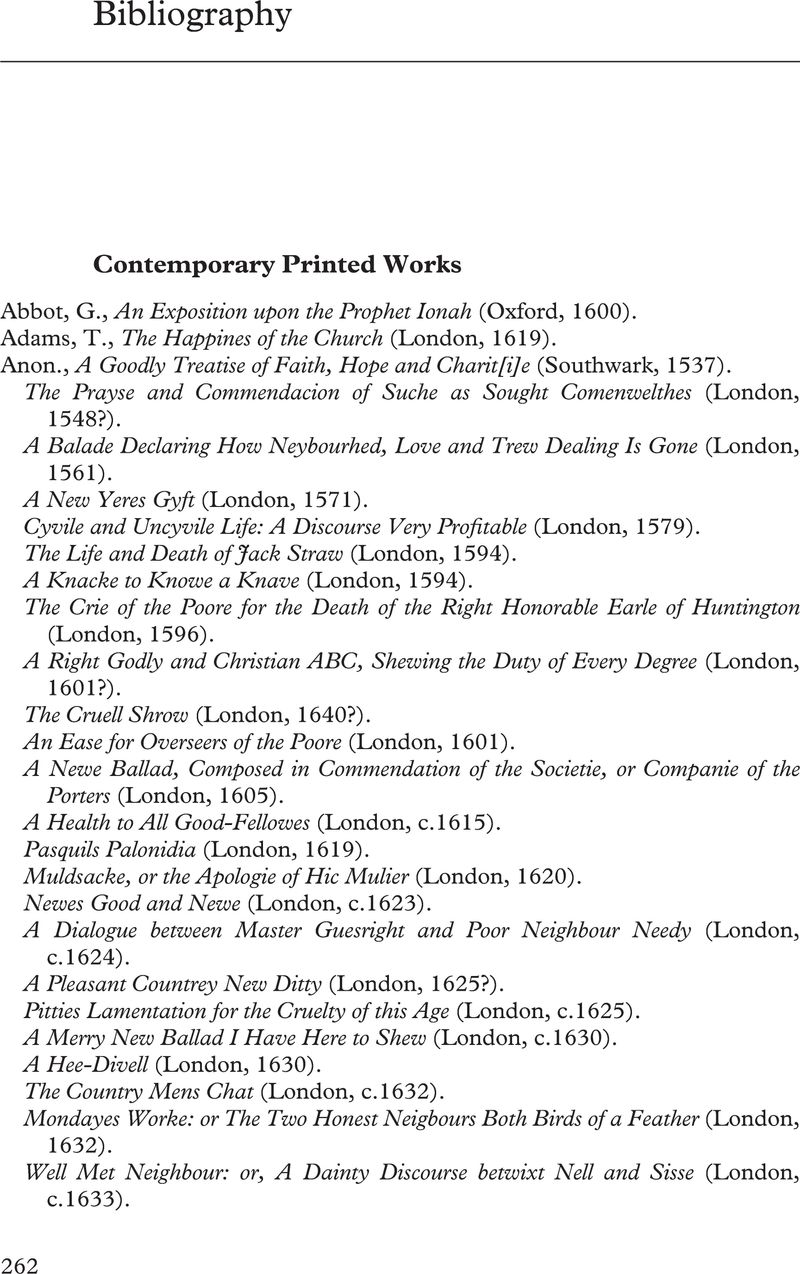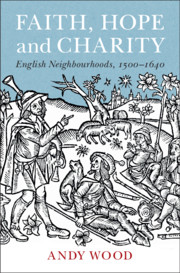Book contents
- Faith, Hope and Charity
- Faith, Hope and Charity
- Copyright page
- Dedication
- Epigraph
- Contents
- Preface and Acknowledgements
- Abbreviations
- 1 Charity Never Faileth: Defining Neighbourhood
- 2 Charity Suffereth Long:
- 3 Now Abideth Faith, Hope and Charity: Place, Neighbourhood and People
- 4 The Tongues of Men and Angels:
- Bibliography
- Index
- References
Bibliography
Published online by Cambridge University Press: 05 October 2020
- Faith, Hope and Charity
- Faith, Hope and Charity
- Copyright page
- Dedication
- Epigraph
- Contents
- Preface and Acknowledgements
- Abbreviations
- 1 Charity Never Faileth: Defining Neighbourhood
- 2 Charity Suffereth Long:
- 3 Now Abideth Faith, Hope and Charity: Place, Neighbourhood and People
- 4 The Tongues of Men and Angels:
- Bibliography
- Index
- References
Summary

- Type
- Chapter
- Information
- Faith, Hope and CharityEnglish Neighbourhoods, 1500–1640, pp. 262 - 284Publisher: Cambridge University PressPrint publication year: 2020



